By
Ronan M. Kisch, Ph.D.
When we think of an anniversary, we usually think of the yearly advent of a wedding, birthday, beginning of a business. But there are subtle anniversaries that do not correspond to a date on the calendar. They are reminders, often even unconscious, of a significant event in the past. These may have been positive events or negative events. They can be triggered by passing a spot on the street or road where the event occurred. Seeing a movie or a television show having a theme that triggers the memory of an emotional event from the past can be an anniversary. A friend or acquaintance can talk about an experience that happened to her or him that triggers a memory of a similar event in one’s own past. Sometimes children reaching a certain age can trigger memories in a parent of when she or he was that age.

These memories come with the same feelings that one experienced when the original event occurred. If they were annoying, painful, or traumatic experiences, they can trigger somatic reactions that one may experience, but not know to what they refer. If these happen repeatedly, they lead to chronic holding patterns with feelings that then become part of personality. These reactions can often be identified by physical holding or bracing patterns in the body.
Most of the time these behaviors from childhood or adolescence did not have any actual logical or realistic protective value, e.g., biting one’s finger nails, twirling hair, shaking a leg. But at the time they were the only behaviors an individual could perform. They provided a sense of control, safety or relief. These behaviors, if they become perpetual, can lead to arthritis, spinal compression, subluxation, fibromyalgia, and/or high blood pressure.
When these anniversary behaviors appear in therapy sessions with my clients, several interventions are brought to bear to identify them, determine their significance or meaning, and then to remove them. The first step is to identify joints and muscles that will not move, a psychophysical holding pattern. This is accomplished with visual attention and gentle rocking motions, the Trager® technique developed by Dr. Milton Trager (1987). Next, the NeuroEmotional Technique (NET) developed by Dr. Scott Walker (1992) assesses underlying NeuroEmotional Connections (NEC). This technique identifies particular emotions connected to the psychophysical holding pattern. The origin of the pattern is determined and released. Trager® movement will confirm the resulting release by demonstrating freedom of movement. Applied kinesiology—a muscle test—then determines whether there is a paradoxical brace—whether the client identifies with the brace, or holding pattern, rather than the release, as I have previously recognized (Kisch, 2014). Finally, clients are encouraged to begin a loving, caring dialogue with their inner selves, something concerned, supportive adults provide to children, but which these clients never had. This final step helps to reinforce maintaining new corrective behaviors.
Case Examples
Joyce, a 65-year-old widow, smiles and talks about a novel experience she is having. She is “feeling safe over fear.” Her friend Susan told her, “You have lived in fear too long!”
As Joyce shares this breakthrough, her feet turn closer together and twist into a pigeon-toed position. Earlier in therapy her knees also would have been locked together. With time and treatment, she is learning how to become aware and release her bracing. But just as she talked about transcending her past chronic fear, she was unaware that her feet went into a brace reaction. When asked not to move and look at your feet, Joyce replied, “Wow! My trainer always says, Straighten out your feet!”

What is fascinating is that Joyce’s reporting of her new accomplishment—overcoming chronic fear—becomes an anniversary event. With this verbal report comes an unconscious somatic recurrence of her fear posture.
When the Trager® motion was applied to Joyce’s legs, they would not move. They were locked. The NET procedure was applied to Joyce’s leg and foot position — it clearly identified “fear.” It then identified the origin of this fear was in the third trimester in her mother’s uterus. Neurologists call this “epigenetics.” The emotional hormones in her mother’s blood supply were being transferred into her fetus. Joyce was experiencing fear in utero and reflexively braced to protect herself. This bracing then unconsciously followed her for decades as she was confronted by challenging life situations.
When applied kinesiology was employed to determine in which position Joyce was most comfortable, her feet straight or pigeon-toed, she was more comfortable pigeon-toed — a paradoxical brace. She identified with the torqued position. Joyce reported that her mother lived in fear of her husband’s strictness and temper. Her father, an extremely devout religious man, abandoned his wife and children to pursue his religious persuasion.
Joyce did not receive tender, loving care as a child and adolescent. She did not learn that that was what she deserved. As an intellectually bright, empathic, and caring woman she was never recognized in her youth for her positive attributes. Later she married a man who was similar to her father. There was little love, recognition or support in the marriage. What she learned in childhood was that she was not entitled to such treatment. She attempted to receive in marriage, from a man like her father, what she did not get from her father. This was not to happen. NET released this holding behavior. With the Trager® procedure Joyce’s feet were straight and her legs flexible.
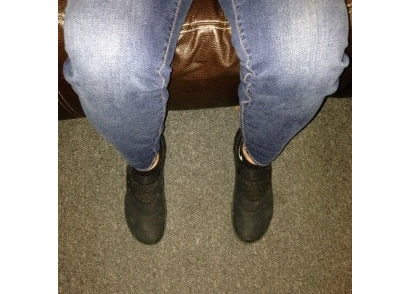
Marilyn, a 64-year-old teacher, reported pain in her lower back after she observed her daughter scolding her two-year-old son. In order to check out if there was a NEC to her pain, she was placed on the table. As soon as she got on the table it was clear that her trunk and head torqued to the left. I asked her to shift her trunk and her head to the right. She had trouble doing this. Then as she lay on the table sufficiently rotated to a straight posture, I asked her, “Which position felt straight — your original posture or the posture you were in after I had you turn?” She reported immediately, “My first posture.” I took out a mirror and allowed her to view her posture after I had her straighten. She immediately burst into an exclamation, “Amazing!” She was struck that in a physically straight posture she felt torqued. After the somatic intervention taking the NEC holding patterns out of Marilyn’s body, I asked her how she felt. This reserved teacher cracked a smiled and triumphantly replied, “I’m relaxed.”
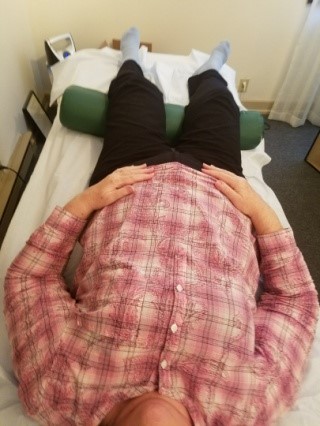
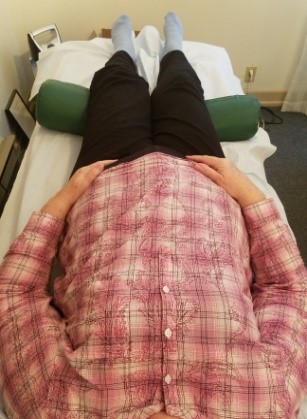
After performing the physical release and relaxation intervention, I employed the NET. The applied kinesiology test was employed on Marilyn to assess if she was congruent with her original torqued posture or her relaxed posture. Her muscle test revealed a paradoxical brace. The test indicated she was congruent with her braced posture and incongruent with her released, relaxed, erect posture.
Low self-esteem was identified using the NET procedure. When asked about her low self-esteem and her torqued body, she responded it came from early childhood. “It would be safer. If my mother could see me, she could get angry.” She then responded, “I’m amazed! I can remember in childhood trying to feel invisible.” Marilyn reported her low self-esteem and her torqued body was a survival strategy on her part dating from early childhood. She tried to avoid her mother’s glance and hostile reaction. Her mother has been hostile toward her for her entire life. As an adult, in the past, when seeing her mother in the community, Marilyn was filled with trepidation and passivity. She felt compelled to go over and dutifully say hello. Now she sees her mother and makes a non-emotional decision as to whether or not she even wants to make contact. Often, without guilt, she does not.
Stan is a 26-year-old former high school and college football player. He is six feet, two inches, and has a strikingly muscular body. He is exceedingly bright, perceptive, energetic, artistic, emotionally sensitive and spiritual. In spite of this he has low self-esteem and is unable to recognize or appreciate his attributes. Stan has a sense that he has a mission to help needy people. Despite his capabilities, his dependency on alcohol and steroids held him back from progressing vocationally. He prays that God gives something to his heart to help him move on. Until treatment he worked for his father who owned a construction company. Daily contact with his father represented perpetual anniversary events.
Stan’s father was financially and materialistically supportive in many ways in Stan’s life. He “always covered my back.” Unfortunately, he was also controlling with no empathic regard. Stan often perceived how things could be accomplished more effectively, but it had to be done his father’s way. This created too much frustration and furthered Stan’s chemical dependency. Hospitalization did not help him to break his drug dependency habit which gave him a delusion of strength. His frustration and internalized anger led him to bar fights.
Somatic psychotherapy has helped Stan to release lifelong psychophysical holding patterns. For example, when getting on the table, Stan was unable to release his arms, legs or neck. A lift under the scapula did not allow his shoulder to lift. Gentle Trager® and gentle pressure from the therapist’s fingers on the thoracic muscles just beneath the shoulder and deep breaths on Stan’s part released his shoulder block and allowed his shoulder to easily lift. The unlocked shoulder would definitely have helped the football Hail Mary pass to go further down the field.
When the paradoxical brace procedure was employed, Stan identified with his braced posture. NET was performed, and Stan discovered that if he released his holding pattern he felt vulnerable losing the comfort he derived from his brace. This “comfort zone” dated back to 13 years of age and ongoing conflict with his strict, emotionally compassionless father. He experienced his brace as “protection against his father.” In all likelihood, this brace compromised his athletic performance in college. Working for his father represented perpetual anniversary events reinforcing the conflict and the physical holding. NET released and reversed the NEC.
These protective anniversary behaviors and postures are habitually and unconsciously held. They become part of the personality repressing full potential of awareness, movement, affect and intellect. As the action gets repeated over and over, it gets stamped into the personality more deeply. On the table one can feel the tight rigidity of Stan’s body. When first attempting the shoulder lift, the shoulder was so tight to the table one could hardly get a hand under his shoulder. After the Trager® release the shoulder released easily and fully. However, when the NET kinesiological test was applied Stan identified with his braced state. The NET feeling procedure identified vulnerability. This feeling related to his relationship with his severe, controlling father. The time procedure again dated back to 13 years of age. When the NET release procedure was applied, Stan’s holding pattern reversed. The perpetual internal conflict he felt with his father dissipated.
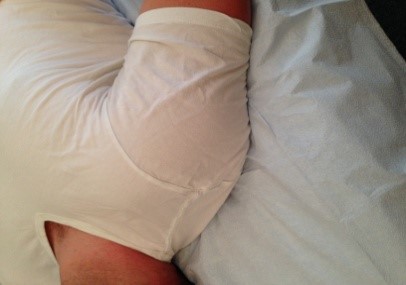
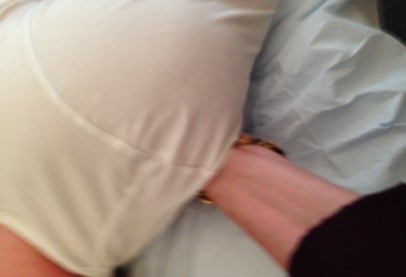
Stan had two alcohol/drug setbacks that got him in touch with the fact he could not handle alcohol or drugs and maintain his sobriety. “The juice is interfering with my internal strength.” Stan experientially understands what backsliding is and no longer wants to do it. He is learning that religious spirit and psychosocial self-knowledge can take the place of chemical highs. He now has a new job dealing with warehouse clothing that gives him a new sense of his independence, abilities, and strength. With treatment Stan got deeper in touch with his spiritual practices. He is discovering how he can obtain clothes and distribute them to the needy. He is learning how to maintain his inner peace and strength in the presence of his father’s caustic, sharp retorts. He feels a new sense of fulfillment.
Anniversary events raise uncomfortable feelings and intensify reactions to them. If the individual does not respond in stereotypic fashion, they become anxious and feel out-of-control. Ultimately the issue for enhancing the quality of one’s life is not having control but having command. In control, in a braced posture, there is only one way a person can respond to a situation, which is the familiar, automatic, unconscious, habitual response. Doing it differently feels wrong.
In stark contrast, in command, an individual is flexible, perceiving multiple possible responses and is capable of consciously choosing the best one. Part of change and growth is bringing a sense of command to one’s life style. It is becoming aware of habitual brace and choosing a better alternative way of responding. It is also becoming aware of the anniversary that was just experienced and talking to one’s inner self — frequently a child or an adolescent. It is not reprimanding or giving advice. It is bringing warmth, understanding and encouragement that was absent during previous anniversaries.
Change from these chronic habitual patterns can and do occur. They come with a sense of command. To bring about a capacity of command for individuals who habitually hold themselves in a braced fashion, an intervention is necessary to provide for intellectual, physical and emotional release. There must be a conscious understanding of the relationship of these patterns from the past and an appreciation that a new problem-solving pattern must be employed for a healthier, more competent life. This intervention cannot come from others. That only increases dependency. The alternative changes must come from within.
Ronan M. Kisch, Ph.D. is a somatic psychologist in Dayton, Ohio. He received his doctorate from the university of Kentucky where he was a NIMH Trainee at the Department of Medical Behavioral Science. He received post-doctoral training at The Gestalt Institute of Cleveland. Dr. Kisch is a Certified NeuroEmotional Technique (NET) Practitioner, a Trager® Practitioner, a Nationally Certified Bodyworker and holds an Advanced Certificate from the Santa Barbara Graduate Institute in Somatic Psychology. He served as a health psychologist in Dayton’s Miami Valley and Sycamore Hospitals. He is the author of Beyond Technique: The Hidden Dimensions of Bodywork, and The Miraculous Achievements of Bodywork: How Touch Can Provide Healing for the Mind Body and Spirit.
References
Kisch, R.M. (2014) Transcending the paradoxical brace response: Mind body connection. Somatic Psychotherapy Today, 4(1), 72-76
Trager, M. (1987). Trager Mentastics: Movement as a Way to Agelessness, (1992). New York: Station Hill Press.
Walker, S. (2008). Thinking about a problem while getting adjusted? The American Chiropractor, 30(12), 18.






